Bloom’s taxonomy has long been used by teachers everywhere to help plan lessons and designing curricula but what is it and how can it be used?
What is Bloom’s Taxonomy? Bloom’s taxonomy (the cognitive domain) is a hierarchical arrangement of 6 processes where each level involves a deeper cognitive understanding. The levels go from simplest to complex: Remember, Understand, Apply, Analyze, Evaluate, Create. They allow students to build on their prior understanding.
I think you’ll agree with me when I say, finding a learning theory that most teachers agree on is like hunting for the lost city of Atlantis.
Or is it?
It turns out that it’s been staring us in the face all along!
Unless you have been living under a rock or in a dark cave for your entire teaching career, you will have come across Bloom’s Taxonomy.
In this definitive guide, I will explain where it came from, what it is exactly and how you can implement it in YOUR classroom!
Who was Benjamin Bloom?
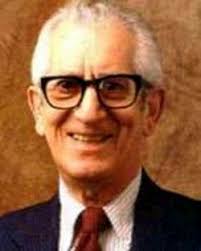
Benjamin Bloom (1913 – 1999), was an American educational psychologist who developed a classification of learning levels (now known as Bloom’s Taxonomy) with his colleagues.
Bloom studied at Pennsylvania State University, where he earned his bachelor’s and master’s degrees.
He received his PhD from the University of Chicago in 1942, where he worked with the highly respected education expert Ralph Tyler and was a talented teacher and was especially interested in students’ thought processes while learning.
Benjamin Bloom Biography
Bloom was born on 21st Feb.1913 in Lansford, Pennsylvania. During his early childhood and adolescence, he was extremely interested in the world around him and methods of acquiring knowledge and information.
He loved to read and write research papers and continued to do so throughout his career, using the vast amount of knowledge he gained in his professional work.
He was extremely devoted to his family, wife, and sons. He taught his children various useful skills, often listening to and composing music and playing board games with them.
Bloom’s Pedagogical Research
Bloom had an excellent career. In the early years, he was the director of the examining board of the University of Chicago, heading a group of leading school psychologists with whom he worked to advance this scientific discipline.
As part of his work at the university, he founded the MESA (Measurement, Evaluation, Statistical Analysis) program.
The MESA program encourages scientists and analysts to think deeply about the manner and practice of assessment. Also, Bloom was chairman of the Faculty Admissions Committee.
The Birth of the Mastery Model
In his research, Bloom concluded that achieving the highest results in a particular field of work requires at least decades of dedication, renunciation and hard work.
Bloom surveyed a sample of about 120 leading mathematicians, physicists, biochemists, artists, pianists, athletes (tennis players, swimmers etc).
The result of the research showed that each of them needed at least 10-15 years of hard work (learning, practising, coaching) and dedication to achieve mastery in their specific area of expertise.
The role of educators, teachers, and professors during their professional work improves the conditions in the environment of students to express their knowledge, talents of ingenuity in the highest possible sense.
In 1957, he was sent by the Ford Foundation to conduct an evaluation survey in India which led to the revision of their examination and evaluation system.
Bloom was quite rightly recognized as an advisor to education around the world. His work on learning theories is essential study material for any teacher
He also complimented his rich career with activism at the International Association for the Evaluation of Educational Achievements (IEA).
Who was Benjamin Bloom Influenced by?
Bloom believed that learning was a process and that it was the teacher’s job to plan lessons and assignments to help students achieve the set goals.
Ralph W. Tyler
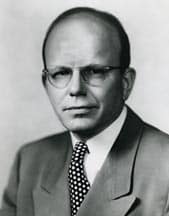
Bloom’s work on setting goals for educational evaluation and the curriculum was influenced by his mentor Ralph W. Tyler (1902-1994).
Bloom was a researcher under Tyler’s mentorship during a distinguished Eight-Year Study (1934 -1942).
The goal of the study was to allow schools to investigate and evaluate alternative methods of assessment in schools.
Tyler worked on the theory and development of the curriculum and the evaluation of the educational process. Promoting behavioral goals, he understood learning as a process of adopting new behaviors.
John B. Carroll
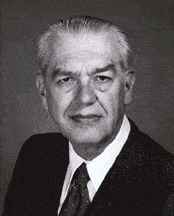
John B. Carrol (1916 – 2003) was an American psychologist and author of “School Learning Model“. Bloom was impressed with Carrolls’ optimism, especially the idea that differentiates students only in the views they take to learn the material.
Then, with the help of a teacher, each child could achieve a certain, required level of knowledge.
Bloom was also influenced by the work of pioneers in individualized teaching, especially Washburne (1922) and his Winnetka Plan and Morrison (1926) and his school experiment.
Individualized Learning
The advantage of individual learning and mentoring is that if a student makes a mistake, he/she receives feedback from a mentor, then a correction follows to ensure the performance and high quality of work.
Successful students search the textbook and relevant sources for correcting mistakes so that they do not repeat themselves.
With the help of his mentor, Bloom developed methods that would create a master of science from students, not just those who would memorize theory and facts and repeat the lessons learned.
Elliot W. Eisner
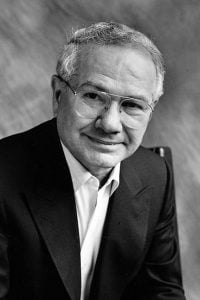
Elliot W. Eisner (1933 – 2014) was Bloom’s student in the education department of the University of Chicago.
Bloom helped his students understand through their own experiences.
Most professors would try to explain the theory but Bloom worked through experiments with students. Bloom inspired his students and associates to dedicate themselves and explore educational opportunities.
He was an optimist based on real facts.
According to Eisner, Bloom was in love with the discovery process and developing strategies in a scientific way.
Benjamin Bloom made a significant impact on the scientific work of his students, contemporaries, and associates.
“After forty years of intensive research on school learning in the United States as well as abroad, my major conclusion is: What any person in the world can learn, almost all persons can learn if provided with appropriate prior and current conditions of learning.”
“Developing Talent in Young People” by Benjamin Bloom”
Bloom’s Domains of Learning
With his colleagues David Krathwohl and Anne Harrow, Bloom proposed three domains of learning; The cognitive domain (knowledge), the affective domain (attitudes) and the psychomotor domain (skills).
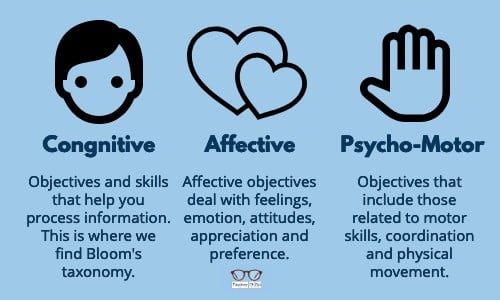
The Cognitive Domain (Bloom’s Taxonomy)
The first of the domains to be proposed was the cognitive domain (1956), this is the one we commonly refer to as Bloom’s taxonomy.
Taxonomy is a scientific discipline that classifies certain organisms based on their similarities and differences.
The cognitive domain suggests that objectives can be ranked in order of their cognitive difficulty.
It is these ranked classifications that teachers across the world are familiar with. The original order ranging from “knowledge” at the most basic to “evaluation” at the most cognitively taxing, is as follows:
- Knowledge
- Understanding
- Application
- Analysis
- Synthesis
- Evaluation
Bloom’s taxonomy is not a simple classification scheme – it is an effort to arrange different thought processes hierarchically.
Each level depends on the student’s ability to complete the previous level or previous levels (phases) For example, a student applying knowledge (Phase 3), he must have certain information (phase 1) and at the same time understand that information (phase 2).
We also see Bloomian cognitive learning rooted in Rosenshine’s Principles of instruction.
The Hierarchical Structure of Cognition
Knowledge. (Remember previously learned content).
Requirements or instructions that trigger typical knowledge-seeking or identifiable activities. Instructional words you could use include:
List, recite, define, name, match,
quote, recall, tell, label, recognize,
arrange, order, state, relate,
repeat, duplicate.
Example. State: Who is the hero in this story?
Understanding. (Mastered the meaning of the content).
This level refers to the student’s ability to understand what is being said, to be able to present in his or her way the content and to understand the conclusions that follow directly from content, claims or results.
Describe, explain, paraphrase,
summarize, interpret,
identify, classify, report, indicate, formulate, express, translate, review.
Example. Explain in your own words, what is the story about?
Application. (Applies the learned in new and concrete situations).
This is about the ability to use some abstractions in specific situations, that is, to solve problems using learned concepts, ideas, rules, or procedures.
Related activities are initiated by the following instructions in the students:
Predict, expand, compare, classify, calculate, apply, solve, illustrate, use, demonstrate, determine, model, operate,
choose, select, perform.
Example: Using what you have learnt about group one metals, predict what will happen when you put a chunk of Lithium in the water.
Analysis. (Breaks down the content and structure of the material).
This level of educational goals is based on logical thinking. To achieve the objectives appropriate to the level of analysis, students should be instructed such as:
Distinguish, confirm, sketch, list all possible consequences, categorize, organize, translate, contrast, differentiate, question, investigate, examine, determine, compare, discriminate, detect, calculate, classify, outline, analyze.
Example: Based on your experiment, what chemical reaction leads to …?
Synthesis. (Formulates and builds new structures from existing knowledge and skills).
This level of goal implies the ability to combine known elements and create a new whole, model, or structure that did not exist before.
The core of achieving this category of goals lies in creative thinking. Students will perform appropriate activities aimed at achieving the goals from this level based on the following instructions:
Create, invent, elaborate, summarize, make, picture, imagine, modify, connect, define assumptions, predict, determine keywords (basic thesis, title) combine, minimize, assemble, plan, generalize, manage, write, conclude, prepare, design,
formulate, build, compose, generate, derive.
Example: What would the world look like if humans suddenly vanished?
Evaluation. (Judges the value of the content for a given purpose).
The objectives at the evaluation level are standards that can be set by the learner, it is their own personal interpretation. Evaluative goals can be initiated by the instructions:
Evaluate, prove, refute, argue, justify, support, convince, debate, resolve the ambiguity, weigh, prioritize, judge.
Example: Justify your opinion on climate change?
Bloom’s Taxonomy Revised
Bloom’s taxonomy was revised by Lorin Anderson, a former Bloom student, and David Krathwohl, Bloom’s original research partner.
Anderson and Krathwohl (2001) redefined the neuro-cognitive processes in the taxonomy and further arranged them hierarchically by listing the corresponding sublevels.
The revised taxonomy retains six levels of educational goals, but now these are formulated as actions (verbs, not nouns as in Bloom’s taxonomy), thus making them easier for teachers to use.
The last two levels have reversed places, so the order is now as follows:
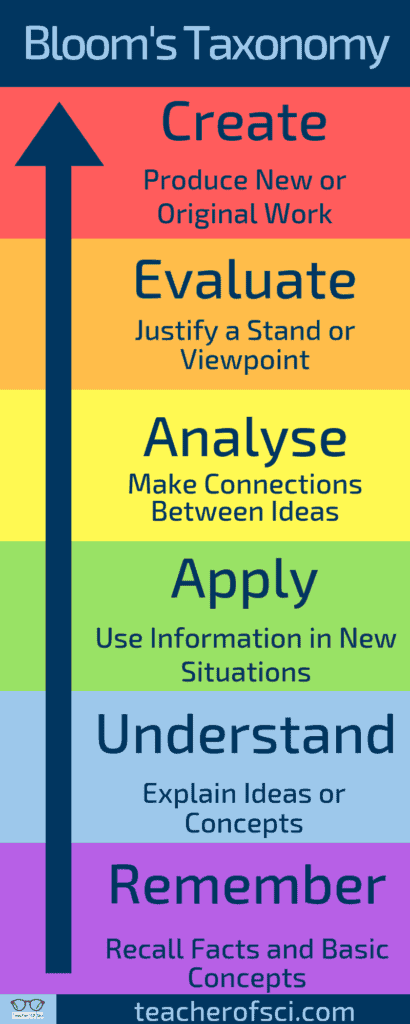
Bloom’s Taxonomy provides a framework for teachers, helping them write and plan the goals and objectives of their lessons.
Its main benefit is that it allows teachers to more clearly differentiate their lesson’s goals.
Another change was to introduce another dimension that more consistently defines the subcategories within each major level.
In this second dimension, different types of knowledge are represented:
Knowledge of facts and data. (Knowledge of terminology and knowledge of specific details and elements of some content).
Conceptual knowledge. (Knowledge of classifications and categories, knowledge of principles and generalizations and knowledge of theories, models and structures).
Procedural knowledge. (Knowledge of subject-specific skills and knowledge of algorithms, knowledge of subject-specific techniques and methods, and knowledge of the criteria for applying appropriate procedures).
Metacognitive knowledge. (Knowledge of strategies, knowledge of what it takes to work on tasks, knowledge of oneself).
Bloom’s publication Taxonomy of Educational Objectives has become widely used around the world to assist in the preparation of evaluation materials.
Many teachers make extensive use of Bloom’s taxonomy, thanks to the structure it provides in areas such as level assessment knowledge.
Due to its comprehensiveness as a learning theory, Bloom’s taxonomy is applicable in different educational situations, at all levels and areas of learning, and is therefore recommended as an indispensable tool in the practice of every teacher.
The Affective Domain
Affective domain – attitudes, values, and interests.
Krathwohl and Bloom proposed the affective domain in 1964 (8 years after the cognitive domain). Like the cognitive domain, it too divides its objectives into hierarchical subdivisions.
This domain addresses the issues of the emotional component of learning and ranges from a basic willingness to receive information to the integration of beliefs, ideas, and attitudes.
The ranked domain subcategories range from “receiving” at the lower end up to “characterization” at the top. The full ranked list is as follows:
- Receiving. Being aware of an external stimulus (feel, sense, experience).
- Responding. Responding to the external stimulus (satisfaction, enjoyment, contribute)
- Valuing. Referring to the student’s belief or appropriation of worth (showing preference or respect).
- Organization. The conceptualizing and organizing of values (examine, clarify, integrate.)
- Characterization. The ability to practice and act on their values. (Review, conclude, judge).
As with the cognitive domain, it is assumed that learning at lower levels is a prerequisite for reaching the next, higher level.
To explain the way we approach things from an emotional point of view, Bloom and his colleagues have developed five basic categories:
Receiving refers to the willingness to receive information. For example, an individual accepts the obligation to be in class, listens to others with respect, shows an interest in social issues.
Responding refers to the active participation of an individual in their education.
For example, an individual shows interest in the subject is willing to prepare a presentation, participate in class discussions and likes to help others.
Valuation ranges from simply accepting some value in the lesson to commitment.
For example, an individual expresses faith in democratic processes, respects the role of science in everyday life, shows concern for the well-being of others or shows an understanding of personal and cultural differences.
Organization refers to the process a person goes through when he or she associates different values, resolves conflicts between them, and begins to adopt them. They adjust behavior to a value system.
For example, they start to recognize the need for a balance between freedom and responsibility in a democracy, accept responsibility for one’s behavior, accept standards of professional ethics or adapts behavior to their new value system.
Characterization is the level of adoption, an individual has a developed system of evaluation in terms of their own beliefs, ideas, and attitudes that guide their behavior consistently and predictably.
For example, They will express confidence in working independently, demonstrate a commitment to the ethics, demonstrate good personal, social and emotional adjustment and lives out healthy life habits.
The Psychomotor Domain
Psychomotor domain – skills.
The psychomotor domain refers to human movement from a psychological perspective, those objectives that are specific to reflex actions, interpretive movements and discreet physical functions.
It is a misunderstanding of the psychomotor domain that physical objectives that support cognitive learning fit the psycho-motor label, e.g.; learning how to chop vegetables or sanding a piece of wood.
These physical actions are a vector for cognitive learning, not psycho-motor learning.
The psychomotor domain is concerned with how we recognize the world around us using our bodies and senses.
For example how we such as learning how to serve in tennis or perform multiple somersaults in high diving or trampolining.
This third domain has received the least attention than the previous two. Bloom and his colleagues did not complete their work on the psychomotor domain leading to later research by other authors.
R.H. Dave (1970)
Dave’s psychomotor domain is perhaps the most common version and can be the simplest to apply as a learning theory.
It deals with levels of competency in a physical task. Dave suggested five levels from the initial discovery to mastery of the physical skill.
| Level | Definition |
|---|---|
| Imitate | You can observe and copy someone else performing a task. |
| Manipulate | You can perform a task from memory or follow written or audible instructions. |
| Precision | You can perform a task without help from others, to a high level of accuracy. |
| Articulation | You can adapt the processes to fit individual requirements. You can adapt the movement when faced with a complication. |
| Naturalization | You can perform movements in an unconscious way. It has become second-nature, we sometimes refer to this as “muscle memory”. |
Elizabeth Simpson (1972)
Simpson’s psychomotor domain is concerned with using and coordinating motor skills. it is a track towards mastery.
| Level | Definition |
|---|---|
| Perception | You can use sensory cues to direct you (observation, written or verbal instruction). |
| Set | You are ready to act. It is a mindset, you are primed to act. |
| Guided Response | The initial stages of mastering a complex skill, you imitate and use trial and error. |
| Mechanism | Basic proficiency. You are beginning to form habits and have a basic to medium level of mastery. |
| Complex Overt Response | You can expertly perform complex actions with minimum wasted effort or mistakes. |
| Adaptation | You can modify your physical movements to overcome new demands. |
| Origination | You can create new movements, based on your learned movements. |
Anita Harrow (1972)
Anita Harrow published her paper in 1972; “A Taxonomy of the Psychomotor Domain“. In it, she classified different types of learning in the psycho-motor domain ranging from reflex actions to those require precise control.
| Level | Definition |
|---|---|
| Reflex Movements | Movements present from birth or appear naturally through puberty. e.g. Breathing or contractions associated with menstruation. |
| Fundamental Movements | Basic movements. Walking, running, jumping etc. |
| Perceptual Abilities | Movements that require a sensory judgement, for example catching a frisbee or jumping over a hurdle. |
| Physical Abilities | Movements that require strength, endurance or flexibility. |
| Skilled Movements | Movements that are learned for a specific purpose. Playing chords on a guitar or sommersaults in gymnastics. |
| Nondiscursive Communication | Referring to movements associated with non-verbal communication. For example, posture or facial expressions. |
How Is Bloom’s Taxonomy Used in the Classroom?
Bloom’s taxonomy has been developed precisely to help teachers formulate learning outcomes and as a guide to devising assessment criteria tailored to the type of cognitive domains and mental and companion skills being assessed.
The research done by Bloom and his colleagues has multiple implications for teaching practice and the quality of education.
It allows teachers to adequately plan their teaching while respecting the individual abilities of students, as well as using different learning and education strategies, innovating practice and adequately assessing students’ knowledge and skills.
Based on the insights gained from such monitoring, teachers can make meaningful adjustments to their curriculum to devote more attention and time to those goals that they did not recognize through their students’ learning journey.
If teachers involve the students themselves in this process, encouraging them to self-assess by comparing expected and achieved outcomes, it will also contribute to the development of learning motivation.
Student self-assessment is a brilliant tool for developing students’ responsibility for their progress and success in learning.
After reviewing the work of Bloom and his associates, it is evident that his contribution to the planning, organization and structuring of the educational process is remarkable.
Bloom’s Taxonomy FAQ
The three domains that form Bloom’s taxonomy are; the cognitive domain (knowledge), the affective domain (attitudes, values, and interests) and the psychomotor domain (skills).
The 6 levels that make up the cognitive domain (the domain commonly referred to as Bloom’s taxonomy are (from simplest to most complex): remember, understand, apply, analyze, evaluate, create.
Bloom’s taxonomy is not a simple classification scheme – it is a hierarchical arrangement of cognitive processes that lend themselves perfectly to teachers planning lessons and allowing students to build upon their prior understanding.
Bloom and his collaborators have provided a framework upon which teachers can build lessons and curricula, students must master one level before building to mastery of subsequent levels.
Dealing with knowledge, the cognitive domain is a hierarchical scaffold where each level involves a deeper cognitive understanding.
The affective domain (sometimes referred to as the feeling domain), is focused on the emotional aspect of learning. It takes into account attitudes, values and interests.
The psychomotor domain refers to human movement from a psychological perspective. It involves those objectives that are specific to reflex actions, interpretive movements and discreet physical functions.

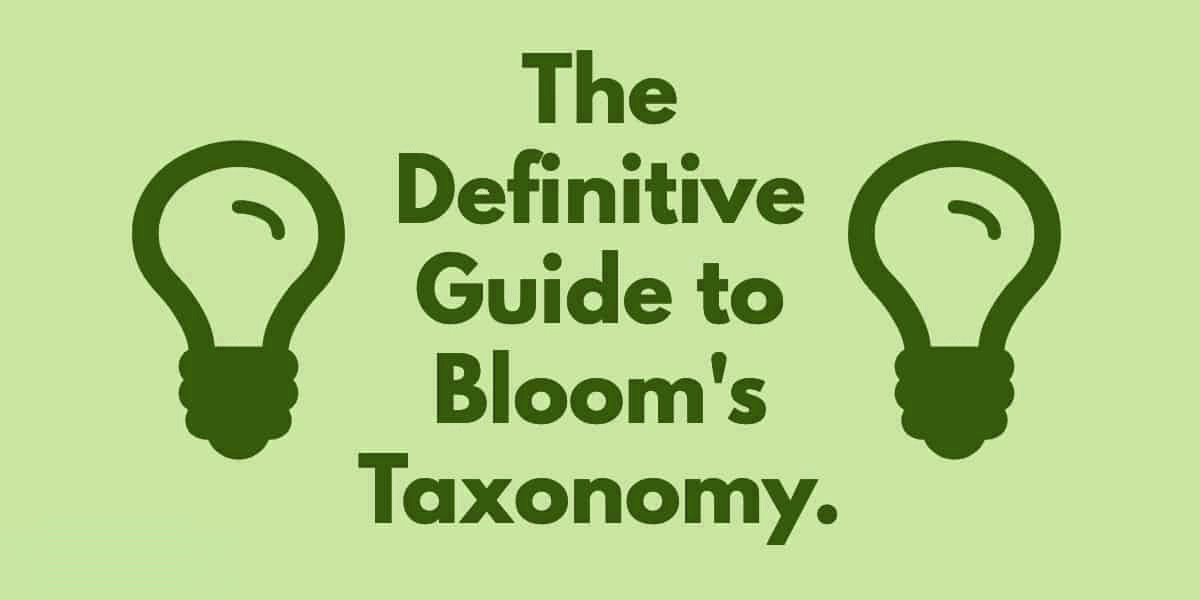
An excellent explanation of teaching and learning levels and skills.
Thanks for these theories, it really helped me to write the teaching materials for the course “learning strategies”